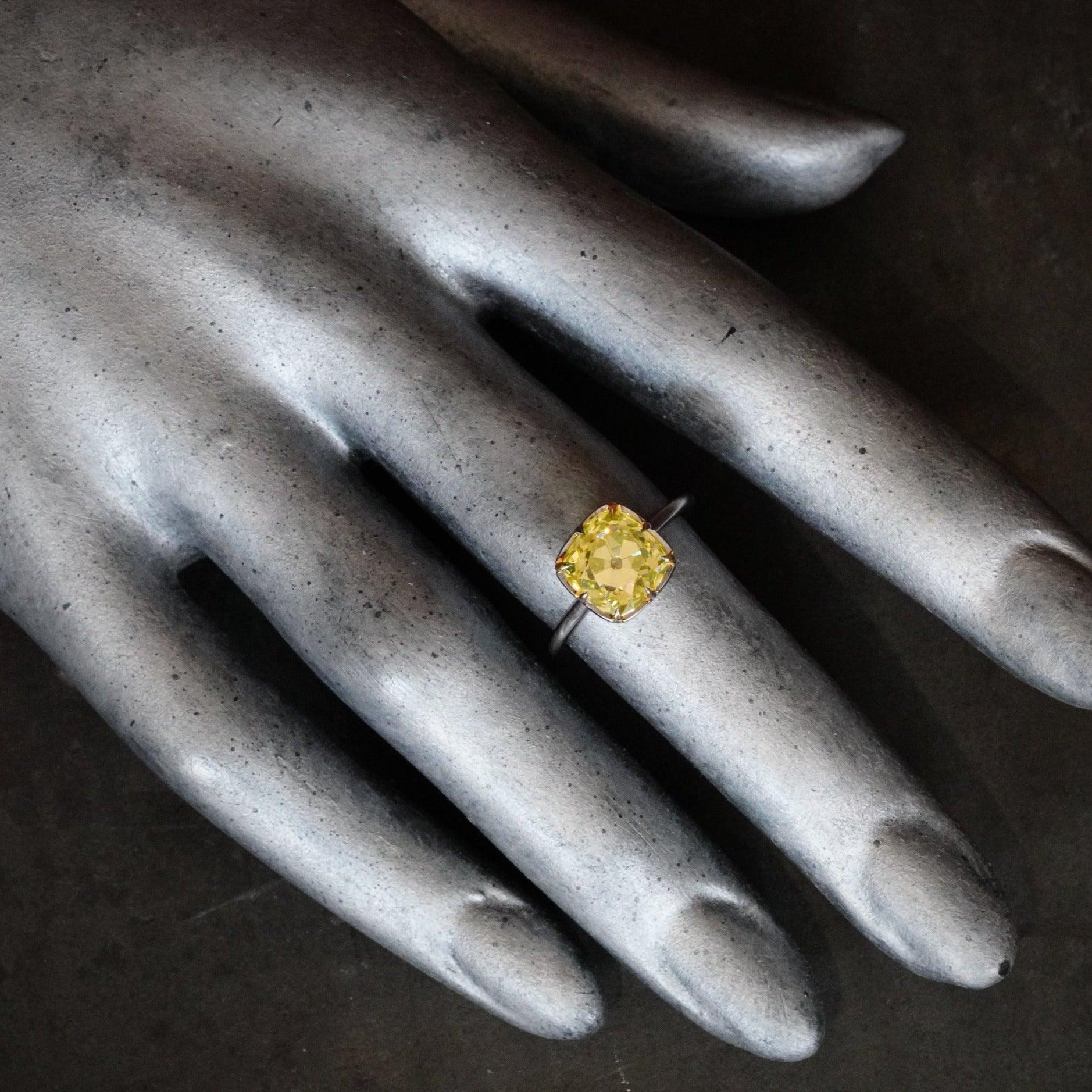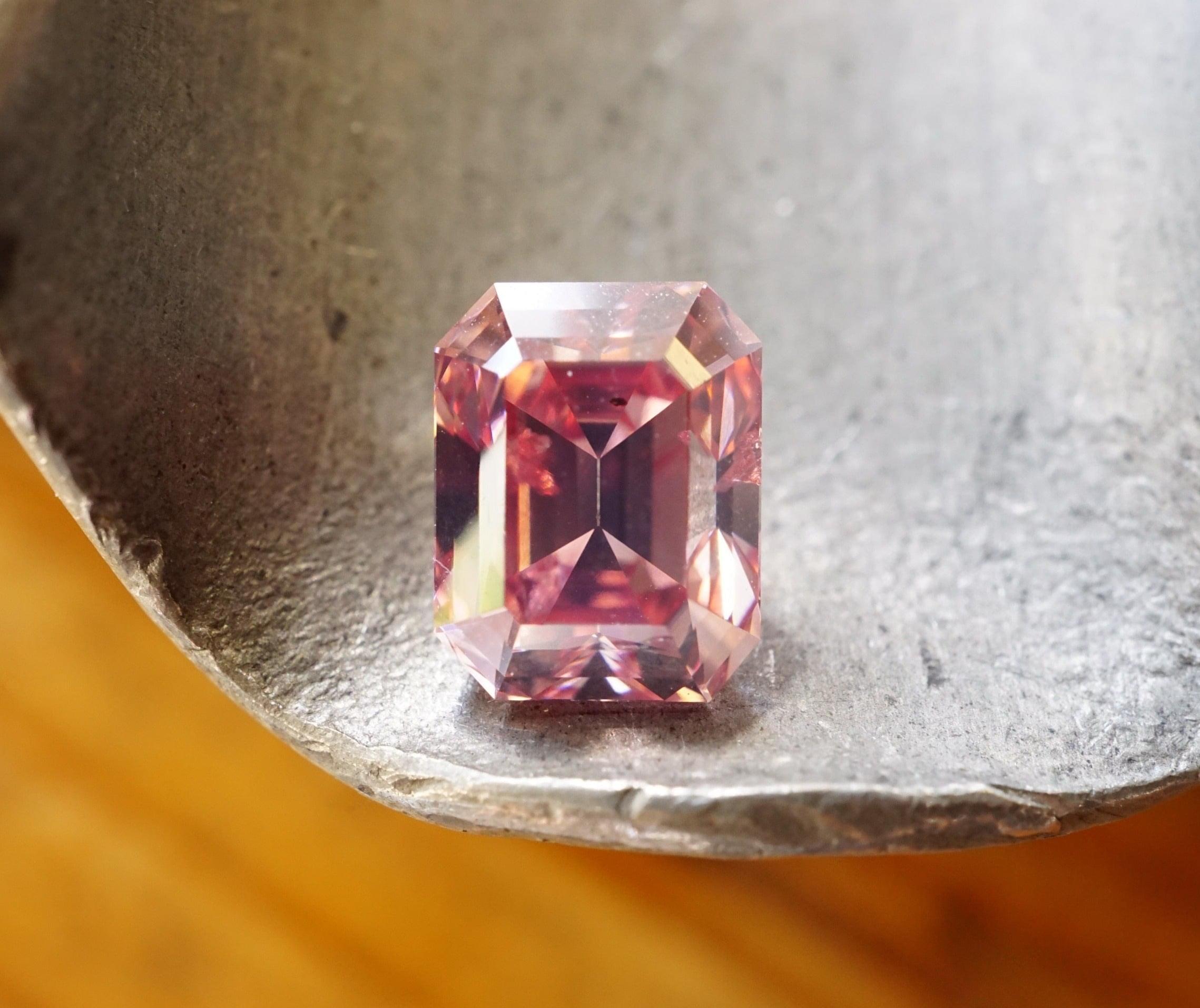
How Fluorescence Gives Diamonds a ‘Glow Up’
When we think of diamonds, we imagine their dazzling brilliance, extraordinary clarity, and timeless appeal. Yet, hidden beneath the sparkle of some diamonds lies a fascinating phenomenon known as fluorescence. Present in approximately 25–35 percent of diamonds, fluorescence causes these gemstones to emit a soft, luminous glow when exposed to ultraviolet (UV) light. This subtle yet striking trait can enhance a diamond’s beauty (or, in certain cases, detract from it depending on various factors), as well as affect its market value and overall desirability.
In this article, we delve into the science behind diamond fluorescence, exploring its causes, how it affects a diamond’s appearance, its grading standards, and the nuances of evaluating fluorescence when making a purchase. Whether you’re a seasoned collector or a first-time buyer, understanding fluorescence will equip you to make informed decisions and deepen your appreciation for these extraordinary gemstones.
What Is Fluorescence in Diamonds?
Fluorescence in diamonds is the visible light emitted when a diamond’s atomic structure interacts with UV radiation, such as sunlight.
Diamonds are composed almost entirely of carbon atoms arranged in a crystalline lattice. However, natural diamonds often contain trace impurities, such as nitrogen or boron, that disrupt its perfect lattice structure. These impurities play a pivotal role in fluorescence.
When UV light strikes a diamond, it excites the electrons within the impurities. These excited electrons temporarily absorb energy and then release it in the form of visible light as they return to their stable state. This emission of visible light is what we perceive as fluorescence.

The color and intensity of the fluorescence depend on the type and concentration of impurities within the diamond. For instance, nitrogen impurities often result in blue fluorescence, the most commonly observed type. However, other colors, such as yellow, orange, green, or even white, can occasionally appear due to the presence of different trace elements or structural anomalies.
Yellow and orange fluorescence are typically linked to specific variations in nitrogen arrangements, while green fluorescence is often associated with radiation exposure or defects caused by natural geological processes.
White fluorescence, though rare, may result from a combination of multiple impurities or irregularities within the diamond’s crystal lattice.
These variations make fluorescence a unique and intricate characteristic of each diamond that possesses it.
Famous Fluorescent Diamonds
One of the most renowned diamonds celebrated for its fluorescence is the Hope Diamond, a 45.52-carat diamond with a certified natural fancy deep grayish-blue color and VS1 clarity, housed in the Smithsonian Institution. When exposed to UV light, the Hope Diamond exhibits a striking red-orange glow, a rare phenomenon known as phosphorescence, where the glow persists even after the UV light source is removed. This rare effect occurs due to specific impurities, such as boron, and structural anomalies within the diamond that trap UV energy and gradually release it as visible light. This lingering fiery glow sets the Hope Diamond apart, offering both scientific insights into its geological origins and an unparalleled visual experience.
This enduring radiance complements the Hope Diamond’s storied history of royal ownership and its infamous reputation for being cursed, further cementing its place as one of the most studied and celebrated gemstones in the world. Scientists and gemologists alike marvel at how these glowing properties enhance the diamond’s allure, making it a truly one-of-a-kind masterpiece.
Similarly, the Wittelsbach-Graff Diamond has gained recognition for its exceptional fluorescence. Originally weighing 35.56 carats and later recut to 31.06 carats, this deep-blue diamond with reportedly internally flawless clarity is believed to have originated from the Kollur mines in India. Like the Hope Diamond, its fluorescence is attributed to boron impurities, which give it an intense blue glow under ultraviolet light. This fluorescence further enhances its brilliance and fire, particularly in UV-rich environments, making it a marvel to behold.
Together, these iconic diamonds highlight how fluorescence—and in the case of the Hope Diamond, phosphorescence—can transform a gemstone into an extraordinary work of art. These traits underscore the remarkable interplay of science and beauty in some of the world’s most exquisite gemstones.
How Fluorescence Affects Diamond Appearance
Fluorescence is usually invisible in diamonds under standard lighting conditions, but in UV-rich environments, it can enhance or detract from a diamond’s visual appeal depending on the color grade of the diamond and the intensity of the fluorescence.
For diamonds with lower color grades, such as those with faint yellow or brown tones (graded K–M by the Gemological Institute of America), diamonds with strong or very strong fluorescence often benefit visually. The blue glow counteracts the natural yellowish tint, creating the illusion of a whiter, brighter stone and potentially elevating its perceived value. This effect makes fluorescent diamonds in this range particularly appealing to budget-conscious buyers looking for diamonds that appear closer to higher color grades.

A 0.90-carat, emerald-cut, fancy deep pink diamond from the Jogani collection with a natural medium blue fluorescence.
Conversely, in diamonds with very high color grades (D–F), strong or very strong fluorescence can sometimes have the opposite effect. In rare cases, these diamonds may exhibit a hazy or milky appearance, disrupting the diamond’s brilliance and light reflection. This phenomenon explains why fluorescence in high-color-grade diamonds is sometimes viewed as a detractor, although not all diamonds with high-intensity fluorescence display this effect.
In most cases, diamonds with faint or medium fluorescence show no noticeable difference in appearance under everyday lighting. As a result, fluorescence at these levels is often considered a neutral or even attractive characteristic, offering little influence on the diamond’s value while adding a unique visual charm in UV-rich environments.
Grading Diamond Fluorescence
Diamond fluorescence is a standard feature noted on grading reports from respected institutions such as the GIA. Grading laboratories evaluate fluorescence by exposing diamonds to long-wave ultraviolet light and categorizing the intensity of the resulting glow into five levels:
- None: No visible fluorescence under UV light.
- Faint: Barely detectable fluorescence.
- Medium: Noticeable fluorescence, but not overpowering.
- Strong: Clearly visible fluorescence under UV light.
- Very Strong: Intense fluorescence that dominates the diamond’s appearance under UV exposure.
These fluorescence grades provide transparency about a diamond’s characteristics and offer insight into how it may perform in various lighting conditions. By understanding these classifications, buyers can better appreciate the unique qualities that make each diamond distinctive.
How Fluorescence Affects Diamond Value
Fluorescence is a double-edged sword when it comes to a diamond’s value. Historically, diamonds with strong fluorescence were viewed as less desirable, especially in high-color grades, due to concerns about haziness. This stigma has led to price discounts for diamonds with medium to strong fluorescence in the D–F color range, even though many diamonds with fluorescence appear just as brilliant as their non-fluorescent counterparts.

Conversely, in lower-color grades (G and below), fluorescence can enhance a diamond’s appearance, making it look more colorless. As a result, these diamonds may command higher prices from buyers who appreciate the brightening effect.
Additionally, some collectors actively seek fluorescent diamonds for their unique visual properties, especially in UV-rich environments, where the glow adds a distinctive charm.
Evaluating Fluorescence When Buying a Diamond
When considering a diamond with fluorescence, it’s essential to assess how this characteristic interacts with the stone’s other features, such as color, clarity, and cut. Begin by examining the diamond under different lighting conditions, including natural daylight and UV-rich environments, to understand how fluorescence affects its appearance.
Pay attention to whether the fluorescence enhances or detracts from the diamond’s beauty. For lower-color-grade diamonds, medium to strong fluorescence might improve the stone’s visual appeal by reducing yellowish undertones. For higher-grade diamonds, ensure that strong fluorescence does not create a hazy or milky effect.
Additionally, review the diamond’s grading report for its fluorescence rating. This objective assessment provides insight into the intensity of the fluorescence and helps you gauge its impact on the diamond’s value.

Finally, consult with a trusted gemologist, gem dealer, or jeweler who can offer expert guidance on whether or not fluorescence aligns with your preferences and expectations.
Fluorescence in diamonds is a fascinating phenomenon that adds depth and complexity to these timeless gems. Whether viewed as a unique feature or a potential drawback, fluorescence offers an additional layer of intrigue for those who seek to understand and appreciate the intricacies of diamonds.
By learning about the science behind fluorescence, its grading standards, and its effects on appearance and value, you can make an informed decision that aligns with your personal preferences and priorities. For some, a diamond’s fluorescent glow is a hidden treasure waiting to be discovered; for others, it’s a characteristic to navigate with care. Either way, understanding fluorescence empowers you to choose a diamond that truly shines.
Top image: Jogani original ring featuring a 4.13-carat, Old Mine–cut, natural fancy deep yellow diamond with SI2 clarity and strong green fluorescence


